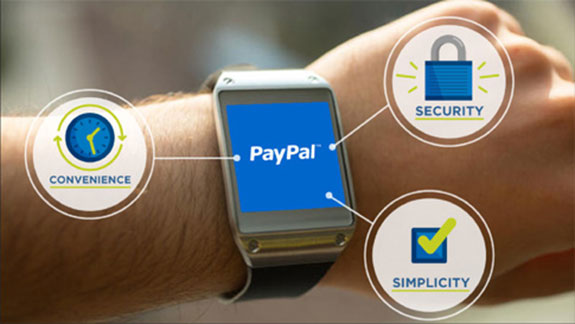
Technology’s done a lot of good for society — that’s obvious. And in the world of personal finance, it’s revolutionized the way we access and manage our money, automate our finances, and save ourselves from overdraft fees.
As a guy who has covered the technology space and loves a good gadget, I’m usually at the forefront of where tech is taking us — and a strong advocate for it.
Wearable technology — like Google Glass or the upcoming Apple iWatch — aims to be the next frontier, making the connectivity of your smartphone not just an accessory you carry around, but something you wear on your person. Glass hasn’t taken off like Google presumably wanted it to, and although the iWatch has received tons of hype, it isn’t here yet — so we can’t say exactly how popular it will be.
Since smartphones and mobile apps helped to drive the adoption of mobile banking, some people ready to believe that wearable banking — managing your money or performing transactions with your wearable technology — is the next big area of growth.
The Motley Fool explains:
Wearable banking may seem like a gimmick right now, but there are two things banks are considering: the rapid adoption of wearable technology, and the pace at which mobile banking took off.
We already mentioned Juniper’s estimates of 100 million wearable devices projected to be shipped by 2017. And if the high end of Huberty’s Apple Watch projections come true, those numbers will be even higher.
Which leads us to the next point. Banks are planning for that growth now because wearable banking could see a faster adoption rate than both online banking and mobile banking. It took 12 years for Wells Fargo to reach 10 million active users for its online banking service, and just six years for its mobile banking to hit that same number, according to The Wall Street Journal.
The article points to a couple of examples: a Spanish bank that has a Google Glass app “that lets users make basic transactions and contact customer service from the device” and “uses augmented reality and taps into GPS to lead customers to the nearest ATM or branch office,” and already released apps for Samsung’s Galaxy Gear 2 smartwatch.
I’m certainly skeptical that wearable banking will have a huge impact on the way we manage our money. Google Glass has already been called “this era’s Segway” and a “failed experiment.” That doesn’t mean it hasn’t done some interesting things — but it certainly hasn’t become a mainstream product like the smartphone. While I could be wrong about the iWatch, it’s tough to imagine that becoming a fixture on every person’s wrist.
Mobile banking became a big success because going mobile was such a big success. Wearables may become more popular over time, but counting on both quick adoption and people deciding to bank on their wearables seems like a big stretch.



